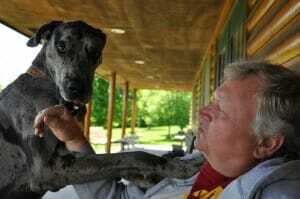Twitter has been a flutter with a “new” study on pigs fed feed containing GMOs. I was curious about all that was being said, so I spent quite a bit of time reading many comments on Facebook and following the topic on Twitter.
Seeing the same old hype, I dug further into the study. Here’s what I discovered… the so-called GMO Pig Study contains nothing scientific whatsoever! In fact, I agree with author Mark Lynas that it’s really “a propaganda effort by anti-biotech campaigners masquerading as proper science.”
The GMO pigs study was funded by extreme organic folks with an agenda, who were connected to the flawed cancer in rats study. It’s no surprise these two tests were very similar. The research was done using a very small group of very unhealthy pigs that were fed two different diets. Almost all of the pigs, whether feed non-GMO or GMO had the same symptoms. Interestingly enough, 15% of pigs fed the non-GMO diet had heart abnormalities as compared to only 6% of the GM-fed pigs. Twice as many non-GM pigs had liver problems as the GM pigs.
These facts didn’t support the agenda of those funding the study, so they chose instead to focus on stomach inflammation. Results of the stomach inflammation study were subjective, at best. It’s no wonder Lynas wrote, “GMO pigs study – more junk science.“
I’m not a scientist, just an old pig farmer, but let me tell about what I have happen in my own operation.
The GMO corn and soybeans I grow are delivered locally to a feed mill and a soybean processing plant, and I doubt they’re kept separate. It wouldn’t make sense to separate the grain as the vast majority of crops grown in my area use this technology.
Technology has been rapidly adopted for its efficiency. I’ve seen firsthand how these crops have been good for my operation, using fewer inputs to produce more feed. Plus, today’s hogs are efficient.
My hogs have very little disease pressure. I can’t imagine having the 13% and 14% death losses as reported for GMO pigs study! My pigs are healthy and grow very fast. They consume about 5 pounds of feed per day to gain, on average, two pounds per day. They do this all on GMO feed.
I know my pigs are healthy, so I have no problem feeding the pork we raise to my family. I’m very happy that the modern consumer is concerned about what they buy to eat, too. I just hope consumers won’t get caught up in these silly, unfounded studies that try to sway consumers’ buying decisions.
The science is clear, writes Lynas. Consuming foods with ingredients derived from GM crops is no riskier than consuming the same foods containing ingredients from crop plants modified by conventional plant improvement techniques.
Buy good, healthy foods and eat in moderation!
























